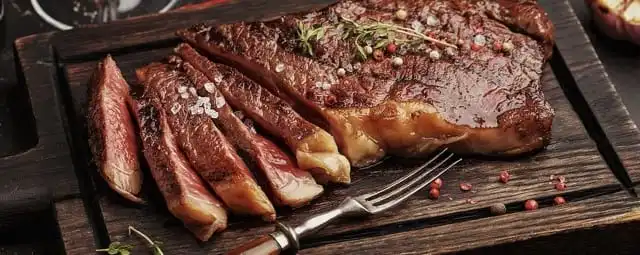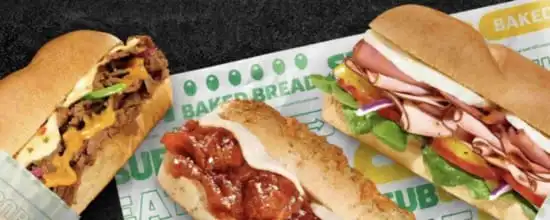1. Overview of Pizza Hut's Performance and Restaurant Development
Pizza Hut, founded by Dan Carney and Frank Carney in Wichita, Kansas, has recently navigated a complex landscape in the pizza industry, reflecting shifts in customer behavior and dining preferences while implementing innovative strategies to enhance its digital experience and maintain brand relevance. The restaurant chain has focused on aspects like franchise growth and customer engagement to ensure a robust performance, including a successful loyalty program that addresses the needs of the younger generation. These initiatives, combined with a thoughtful approach to restaurant design, delivery convenience, and franchise expansion, have been pivotal in shaping its current market share and overall revenue trends.
Pizza Hut has demonstrated notable revenue growth over the past few years, largely driven by enhanced delivery services and a focus on customer preferences.
In fact, the brand recorded a 15% increase in revenue in the last fiscal year alone, a trend that mirrors its commitment to adapting to the evolving landscape of consumer demands and leveraging its iconic pan pizza.
This impressive growth can be attributed to a variety of innovative marketing strategies, including targeted social media campaigns, such as those on TikTok, and promotional discounts aimed at attracting a wider audience.- Year-over-year growth has consistently outpaced industry averages, highlighting Pizza Hut’s competitive edge.
- For instance, while the fast-food sector saw an average growth of 8%, Pizza Hut exceeded that target significantly.
The integration of advanced delivery technologies, such as real-time tracking and contactless options, has further enhanced customer experience, fostering loyalty and repeat business.
When comparing Pizza Hut with its key competitors, such as Domino's and NPC International, it becomes evident that the brand has adapted its strategies to cater to evolving market demands and customer behavior.
This adaptability is reflected in its robust market share as well as its evolving marketing strategies. Customers increasingly prioritize convenience and engagement, and Pizza Hut has made significant strides in areas such as family dining and user-generated content.
- The introduction of user-friendly online ordering platforms allows consumers to place orders effortlessly.
- Pizza Hut's proactive approach in customer engagement through social media campaigns has set it apart from other brands.
- This becomes particularly relevant when contrasting its delivery options with those of competitors like Domino's, where on-time delivery has become a key focus.
Ultimately, these strategic initiatives foster customer loyalty and position Pizza Hut favorably in a competitive landscape.
2. Factors Affecting Pizza Hut's Performance
Several factors have influenced Pizza Hut's performance, particularly the impact of the pandemic, which has fundamentally altered customer dining preferences, accelerated digital transformation, and necessitated changes in physical restaurant design.
The pandemic has significantly impacted Pizza Hut's business model, pushing the brand to enhance delivery convenience through services like contactless delivery and a focus on online orders, utilizing QR code game technology for a better customer experience.
In response to consumer demands for safer dining options, the brand implemented several changes across its operations. Prioritizing safety became a central theme where strict hygiene protocols were enforced, including regular sanitization of surfaces and staff wearing masks. The use of social media marketing surged as they engaged customers with promotions focused on takeout and delivery options, ensuring that safety was paramount while still connecting with their audience. This proactive response is part of Pizza Hut's broader brand transformation efforts. The use of social media marketing surged as they engaged customers with promotions focused on takeout and delivery options, ensuring that safety was paramount while still connecting with their audience.
- Restaurants were redesigned to create more space between tables, enhancing the comfort of diners choosing to eat in.
- Digital menus replaced physical ones, reducing touchpoints significantly.
A rise in comfort food preferences indicated a shift in consumer behaviors, leading the brand to highlight their classic offerings while also introducing new, shareable menu items that resonated well with families during extended stay-at-home periods.
Pizza Hut's key initiatives and strategies revolve around brand transformation, with a focus on innovative marketing strategies such as the 'newstalgia' campaign, designed to resonate with both longstanding and new customers.
These efforts are complemented by a comprehensive loyalty program, which aims to deepen customer engagement and foster a sense of community among patrons. By offering rewards and personalized experiences, this program not only encourages repeat visits but also aligns seamlessly with the brand's broader objectives of franchise growth and market share expansion.
In addition, Pizza Hut has embraced technological adaptations, such as advanced mobile ordering systems and data-driven marketing approaches, to enhance customer convenience and satisfaction. These efforts are part of a larger brand transformation strategy aimed at reinforcing brand identity and market relevance.
- Successful marketing campaigns, including partnerships with popular franchises, like Little League, have further amplified the brand’s visibility and appeal.
- These initiatives contribute to an evolving landscape where customer loyalty is paramount.
These strategies reflect Pizza Hut's commitment to innovation while reinforcing its position in a competitive market.
Customer reviews and feedback on Pizza Hut often highlight the dining experience, emphasizing the quality of the iconic pan pizza, the effectiveness of engaging marketing strategies, and the nostalgia associated with memorable stories from the 1990s and 2000s.
Many patrons appreciate not only the savory taste of the crispy, cheesy crust but also the quick and friendly service that accompanies their meals. These reviews frequently mention how the vibrant atmosphere and inviting decor make for a memorable outing, contributing to overall satisfaction. On the other hand, some customers point out inconsistencies in delivery times and order accuracy, indicating that occasional lapses can detract from the overall experience, highlighting the importance of customer touchpoints and consistent delivery service. Understanding these sentiments allows Pizza Hut to refine its customer engagement tactics, addressing grievances promptly and enhancing their service procedures to ensure that both new and returning customers leave happy. This is crucial for maintaining a positive brand identity.
3. Challenges Faced by Pizza Hut
Pizza Hut faces several challenges in the current competitive landscape, particularly in terms of change management and the need for continuous adaptation to maintain its position in the pizza industry.
Key challenges faced by Pizza Hut include adapting its delivery service to meet the rising expectations of customers, redesigning physical restaurant spaces to align with evolving dining preferences, and maintaining a competitive edge in the fast-paced market.
To effectively address these issues, it is essential to understand how customer expectations are changing rapidly. Today’s diners are not only looking for speed and efficiency in delivery services, but also crave convenience that seamlessly integrates with digital technology.
For instance, utilizing mobile apps and online ordering systems can significantly enhance the customer experience by providing real-time tracking and customization options. The redesign of physical locations must reflect a versatile dining strategy that caters to the growing trend of casual dining and takeout, while incorporating elements that resonate with nostalgia and the brand's classic logo.
- Incorporating comfortable seating arrangements for patrons who prefer a relaxed atmosphere.
- Creating designated areas for online orders to streamline pickups.
- Utilizing modern decor that resonates with contemporary tastes.
These adjustments not only enhance operational efficiency but also cater to the evolving behaviors of diners who expect more than just good food; they desire an engaging environment that meets their diverse needs.
To address the challenges it faces, Pizza Hut is implementing agile methodologies and technology adaptations aimed at improving operational efficiency and customer satisfaction. This strategic approach not only focuses on speed and flexibility but also enhances the overall dining experience for customers.
Incorporating these agile principles, the brand is embracing various specific strategies, such as:
- Revamped Marketing Techniques: Engaging customers through targeted digital campaigns that resonate with local preferences.
- Technology Integration: Utilizing advanced delivery tracking systems and AI-driven chatbots to streamline order processes and improve service delivery.
- Innovative Menu Offerings: Experimenting with diverse, health-conscious options that cater to evolving consumer tastes and engaging marketing strategies like the 'newstalgia' campaign to attract the younger generation.
The application of agility methodology helps in change management by fostering a culture of collaboration and rapid iteration, allowing Pizza Hut to adapt quickly to market trends and consumer demands while minimizing operational disruptions.
4. Future Outlook for Pizza Hut and Its Competitive Landscape
The future outlook for Pizza Hut appears promising, driven by strategic plans for expansion, growth, and continued focus on an innovative menu that appeals to diverse consumer preferences. Pizza Hut's marketing strategy includes notable campaigns like the newstalgia campaign, which leverages consumer research to understand and cater to shifting trends.
Pizza Hut's plans for expansion and growth involve a multifaceted approach that includes increasing its franchise footprint and enhancing online order capabilities to capture a larger market share. This includes promotional strategies and agile strategies to stay ahead in the competitive landscape.
This strategy is not only about opening new locations but also about adapting to the evolving preferences of today’s consumers, which was first implemented by founders Dan Carney and Frank Carney in Wichita, Kansas. Enhanced digital experiences are becoming essential in the competitive landscape, where convenience reigns supreme. To cater to these demands, the brand is prioritizing the improvement of its delivery services, ensuring faster and more reliable options for customers.
Leveraging data analytics enables Pizza Hut to better understand customer preferences and tailor marketing strategies accordingly.
- Opening new franchise locations in high-demand areas
- Enhancing mobile app functionality
- Implementing innovative tracking for deliveries
By aligning with broader market trends, such as the increasing reliance on technology for food ordering, Pizza Hut aims to create a more streamlined and satisfying customer experience.
Predictions for Pizza Hut's future performance indicate a potential for sustained growth, contingent on its ability to adapt to market trends and evolving customer behavior in the competitive pizza industry.
In an ever-changing landscape, the potential for innovation remains high, especially as consumer preferences shift towards healthier and more sustainable dining options. Recent studies suggest that patrons are increasingly drawn to brands that prioritize fresh ingredients and environmentally friendly practices. By embracing these trends, Pizza Hut can effectively position itself as a leader in the market.
- Technological advancements play a crucial role as well, especially with the rise of online ordering and delivery services.
- Enhanced mobile apps and AI-driven recommendations could significantly improve customer interaction.
- Understanding competitive dynamics is essential; emerging local pizzerias and food trucks are often capturing market share by offering unique and artisanal products, and Pizza Hut faces competition from major chains like Domino’s.
Aligning its strategies to focus on these key areas will not only attract a diverse customer base but also reinforce Pizza Hut's longstanding reputation in the industry, paving the way for future successes.
5. Conclusion
In conclusion, Pizza Hut's current performance reflects a combination of innovative strategies and a proactive approach to addressing challenges, setting a positive tone for future prospects in the pizza industry.
This unique blend not only strengthens its competitive edge but also enhances customer loyalty and satisfaction. As the brand continues to adapt and innovate, it must remain focused on its core values and brand identity, ensuring that it resonates with a diverse consumer base. Iconic products like The Big Foot, Stuffed Crust Pizza, and The Big New Yorker have been key in maintaining this identity.
- Embracing technology: Incorporating advanced digital ordering systems.
- Diverse menu offerings: Catering to various dietary preferences.
- Sustainable practices: Focusing on eco-friendly products and packaging.
By tackling industry challenges head-on and prioritizing growth opportunities, Pizza Hut is well-positioned to thrive in a dynamic market. This dedication to evolution will undoubtedly be crucial for maintaining relevance and competitiveness in an ever-changing landscape.
Key takeaways from Pizza Hut's journey illustrate the importance of adaptability, customer engagement, and continuous innovation in maintaining relevance and competitive edge within the pizza industry.
Throughout its history, the brand has demonstrated that embracing change is vital for survival. Consumers' preferences have shifted dramatically in recent years, prompting Pizza Hut to rethink its approach.
As the company ventured into digital spaces, they recognized the need for a user-friendly online ordering system. This focus on technology not only streamlined operations but also enhanced overall customer satisfaction. Loyalty programs and personalized marketing efforts have strengthened consumer relationships, making patrons feel valued. This approach has been a key part of Pizza Hut's marketing strategy, especially evident in its newstalgia campaign.
The lessons learned here can guide other businesses seeking to thrive in a competitive environment. Embracing agile strategies and an agile methodology can be particularly beneficial.
- Focus on innovation
- Enhance customer experience
- Utilize technology for engagement
By capitalizing on these strategies, companies can aspire to achieve sustained growth and long-term success.
6. Frequently Asked Questions
Pizza Hut is doing well despite facing competition from other pizza chains in the market, including NPC International, which filed for bankruptcy in 2020. The company continues to innovate and adapt to changing consumer preferences, ensuring its success in the industry.
Yes, Pizza Hut remains one of the most popular pizza chains in the world. It has a strong global presence with over 18,000 locations and a loyal customer base.
Pizza Hut is known for its variety of pizza offerings such as stuffed crust, pan pizza, and the iconic Meat Lovers pizza. It also has a strong delivery and takeout system, making it a convenient option for customers.
Pizza Hut has adapted to the pandemic by increasing its focus on contactless delivery and takeout options. This adaptation was crucial in 2021, as the industry faced unprecedented challenges. It has also implemented safety measures in its restaurants to ensure the health and safety of its customers and employees.
Like any other business, Pizza Hut has had its share of challenges. In recent years, the company has faced competition from other pizza chains and the rise of fast-casual dining options. However, Pizza Hut has continued to innovate and evolve to stay relevant in the market.
The future looks bright for Pizza Hut as the company continues to expand its global presence, initially established in Wichita, Kansas, and adapt to changing consumer trends, utilizing nostalgia marketing techniques. It is also investing in technology and sustainability to ensure its long-term success in the industry.
Was this page helpful? Give us a thumbs up!












